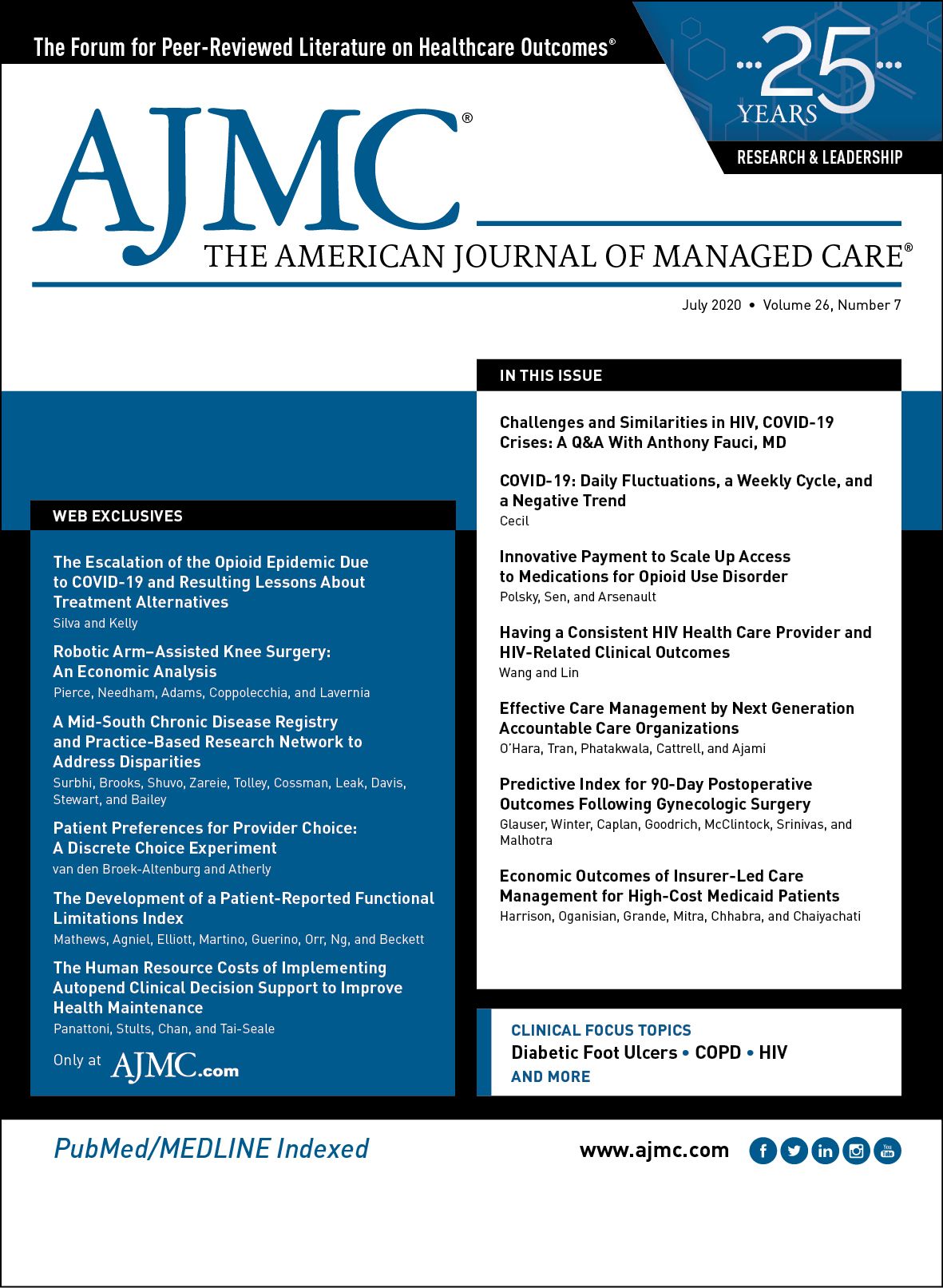- Center on Health Equity & Access
- Clinical
- Health Care Cost
- Health Care Delivery
- Insurance
- Policy
- Technology
- Value-Based Care
COVID-19: Daily Fluctuations, a Weekly Cycle, and a Negative Trend
Daily fluctuations in new confirmed cases of coronavirus disease 2019 (COVID-19) reveal a weekly cycle, with increasing risk of infection through the workweek, but an overall negative trend.
Am J Manag Care. 2020;26(7):284-285. https://doi.org/10.37765/ajmc.2020.43336
Takeaway Points
New confirmed cases of coronavirus disease 2019 occur in a weekly cycle, with increasing risk from Monday through Friday.
- Risk of infection is lowest on Monday and greatest on Friday.
- The risk increases significantly each weekday.
- Risk declines from a peak on Friday through Saturday and Sunday to begin a new cycle on Monday.
- The overall trend of new confirmed cases is negative since April 1, 2020.
Examination of the daily fluctuations in new confirmed cases of coronavirus disease 2019 (COVID-19) in the United States, as reported by the Johns Hopkins University Coronavirus Resource Center through the user content section of GitHub, reveals a weekly cycle by day of the week.1 All days of available data were reviewed through May 11, 2020, considering only complete weeks, since the new case plateau began on March 29, 2020, through May 2, 2020.
New cases were calculated by taking the difference between cumulative confirmed cases on successive days. A graph of new cases shows weekly cycles beginning March 29 (Figure 1) and continuing through the sixth complete week that ended on May 10. The weekly cycle begins with Monday having the lowest average number of cases at 24,695; the daily average increases each day, peaks on Friday at 33,838, and then declines Saturday and Sunday to 26,220. The relative risk of new confirmed cases by day of the week for the 5 complete weeks is 0.850 (95% CI, 0.850-0.860) for Monday, increasing significantly each day to 1.171 (95% CI, 1.166-1.177) on Friday (Table and Figure 2). The risk falls on Saturday and Sunday to begin the weekly pattern over again on Monday. The trend of new confirmed cases was tested using a Poisson regression, confirming a negative trend and an aggregate level effective reproductive number of R0 = 0.996 (P <.0005). Stata version 16.1 was used for the analyses.2
This analysis shows an example of the effect of greater exposure on the risk of COVID-19 infection through the workweek. Although the overall trend over the 39 days has been negative, consideration of the workweek effect may be helpful.
Author Affiliations: Independent consultant, Knoxville, TN.
Source of Funding: None.
Author Disclosures: The author reports no relationship or financial interest with any entity that would pose a conflict of interest with the subject matter of this article.
Authorship Information: Concept and design; acquisition of data; analysis and interpretation of data; drafting of the manuscript; critical revision of the manuscript for important intellectual content; statistical analysis; provision of patients or study materials; obtaining funding; administrative, technical, or logistic support; and supervision.
Address Correspondence to: William T. Cecil, MBA, 12807 Long Ridge Rd, Knoxville, TN 37934. Email: bcecil1@chartertn.net.
REFERENCES
1. CSSEGISandData: COVID-19. GitHub. Accessed May 7, 2020. https://github.com/CSSEGISandData/COVID-19/tree/master/csse_covid_19_data/csse_covid_19_daily_reports_us
2. Stata/MP 16.1 for Windows. Version 16.1 (64-bit x86-64). StataCorp; 2020.

Managed Care Reflections: A Q&A With Laurie C. Zephyrin, MD, MPH, MBA
November 12th 2025To mark the 30th anniversary of The American Journal of Managed Care, each issue in 2025 includes a special feature: reflections from a thought leader on what has changed—and what has not—over the past 3 decades and what’s next for managed care. The November issue features a conversation with Laurie C. Zephyrin, MD, MPH, MBA, senior vice president for achieving equitable outcomes at the Commonwealth Fund. This interview has been edited for length and clarity.
Read More

